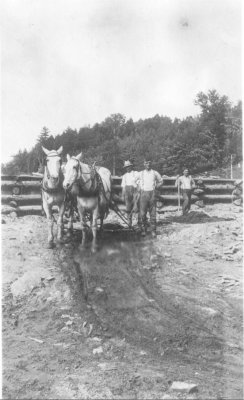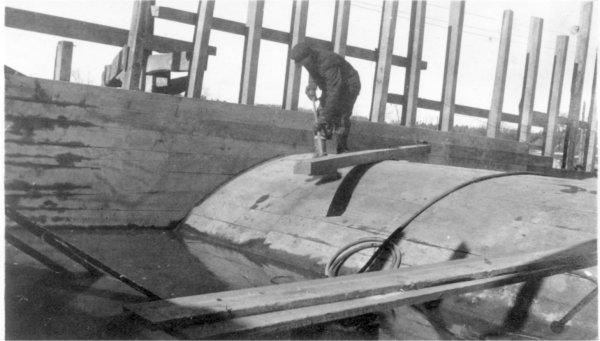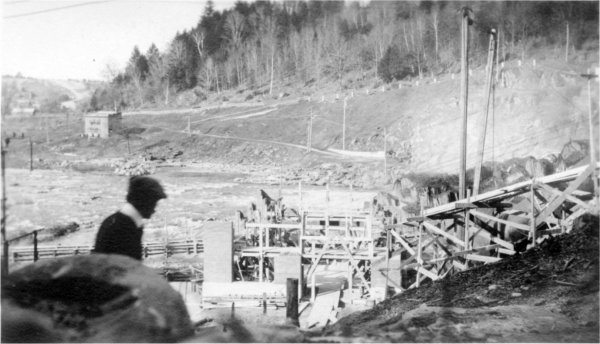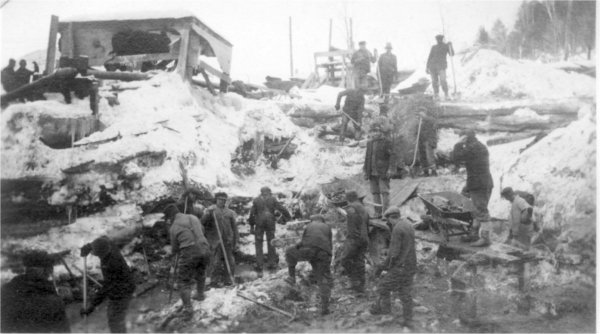|
Henry
|
 |
« : November 18, 2004, 07:42:24 PM » |
|
Hi All,
Sunday night at 7 p.m. in the BFA Library, we will be showing some photos of the building of the power plant at Fairfax Falls in the 1904-1905 timeframe. There are about 100 photos





A letter to the editor taken from the St. Albans Messenger in those early years gives you an idea of what was going on in these booming times:
FAIRFAX EXPERIENCING A REAL BOOM
A fine School Building Being Erected and the Water Power Developed for Industrial Purposes
To the Editor of The Messenger:
The people of this town are now witnessing some things that for years past they have been thinking might possibly come to some generation in the far future. December 20, 1877, this town came in possession of a legacy of $25,000 from Hon. Hiram Bellows, a former thoughtful resident and native of Fairfax.
The legacy consisted of 250 shares of capital stock of the Chicago, Rock Island, & Pacific Railroad Co., par value $100 per share. The will provides that when the fund shall have accumulated to the sum of $250,000 a school shall be established to be called the "Bellows Free Academy" of Fairfax, Vt., with an endowment fund of not less than $200,000.
In June, 1880, we surrendered to the Rock Island company the original 250 shares of stock, receiving therefor in return 500 shares. They use to call this "watering"; they now call it "capitalization." During the years following 1884 we purchased and paid for stock at seventeen different times at an average cost of 93 3-10. It was the policy of the trust to purchase stock when below, letting it alone when it was above par, thereby getting instead of paying a premium. Meanwhile as a rule dividends were placed temporarily in savings banks, or in other available funds drawing from 3 to 6 per cent all of which aided in the accumulation of the fund. In April, 1902, we sold out at a high premium, adding more than $104,000 to the principal, making the amount of the fund upwards of $257,000. The receipts from interest and other sources since the above date, after deducting a disbursement account of $9,753.48, leaves the assets September 1, $260,912.31.
The Bellows Free Academy will be a substantial brick building approximately 68x128 feet, the main part three stories, and the wings two stories above basement. The height from grade line to top of tower will be 73'. The walls of the building are now nearing completion to the third floor. All partition walls are twelve inch, built of brick. The heating and ventilating system is one most approved and up to date. The contractor the same, together with the plumbing has lately been awarded to G. R. Blodgett & Co., of Burlington, at t the cost of something less than $6,000. The cost of the building completed will be about $400,000.
With thirty or more men at work on this building, together with three times the number now employed by the Vermont Power and Manufacturing Co. at the falls, Fairfax is having a veritable boom. Throngs of people come and go to see the sights. To this looker-on it is simply marvelous to see what has been accomplished inside of three weeks. The machinery in the woolen mill has been sold for a song, smashed up, and carried away by junk peddlers, the building itself razed to the ground, and the very rocks on which it stood are being blown away to give more length for the overflow in time of high water. A coffer dam is being constructed to turn all the water in the river through channels that conveyed the water to the mills, so that a new concrete dam can be built near where the old crib dam now stands. Several high derrick poles with their guy ropes remind one of a ship yard. Numerous steam drills are in operation on the south and westerly side, and by the use of modern explosives rocks are being reduced to a grade for a pipe line from the dam for the foot of the fall where the power house is to be, whose powerful turbines will propel the dynamos that will send the electric current along our valleys to light towns and cities beyond and propel machinery or run the electric car. A score of men are now setting transmission poles along the highway leading to the city of St. Albans. Our town will get all the light we want; later trolleys will make us next door neighbors to adjoining towns and cities. Some of our people are somewhat exercised over the report that Mr. E. A. Sowles will bring a suit immediately and put a stop to all this work. It appears that Mr. Sowles is in possession of a deed dated January 10, 1828, (consideration $25) of a parcel of land 40x50 feet near the foot of the falls, which Daniel Wilkins, then owner of the falls, gave to D. and L. Nicholls for a site for a blast furnace, with the privilege of using sufficient water from a flume to carry two tub bellows. There is no conveyance of the flume itself, or the water power itself, expressed or implied, simply a hole or opening in the flume venting water sufficient to carry two tub bellows. The blast furnace did not materialize, consequently the opening in the flume was never made.
In 1872 the power was abandoned and has not since been used for any purpose.
Mr. Sowles already has a suit in chancery in the case. The funniest thing is, that being unable to fix definitely the spot, he has chosen a location 200 feet away, and on top of rocks 20 feet perpendicular above where the flume was. Just the means to be taken to get the water up there to run the blast furnace, is not quite clear, unless the laws of gravitation can be reversed, causing water to run upward instead of downward. Meanwhile we predict the work at the falls will proceed without interruption. And now a company, is formed and are prospecting to find a source of supply for water works for a village. Let the good work go on.
F. W. Shepardson - Fairfax, September 14, 1903
|









